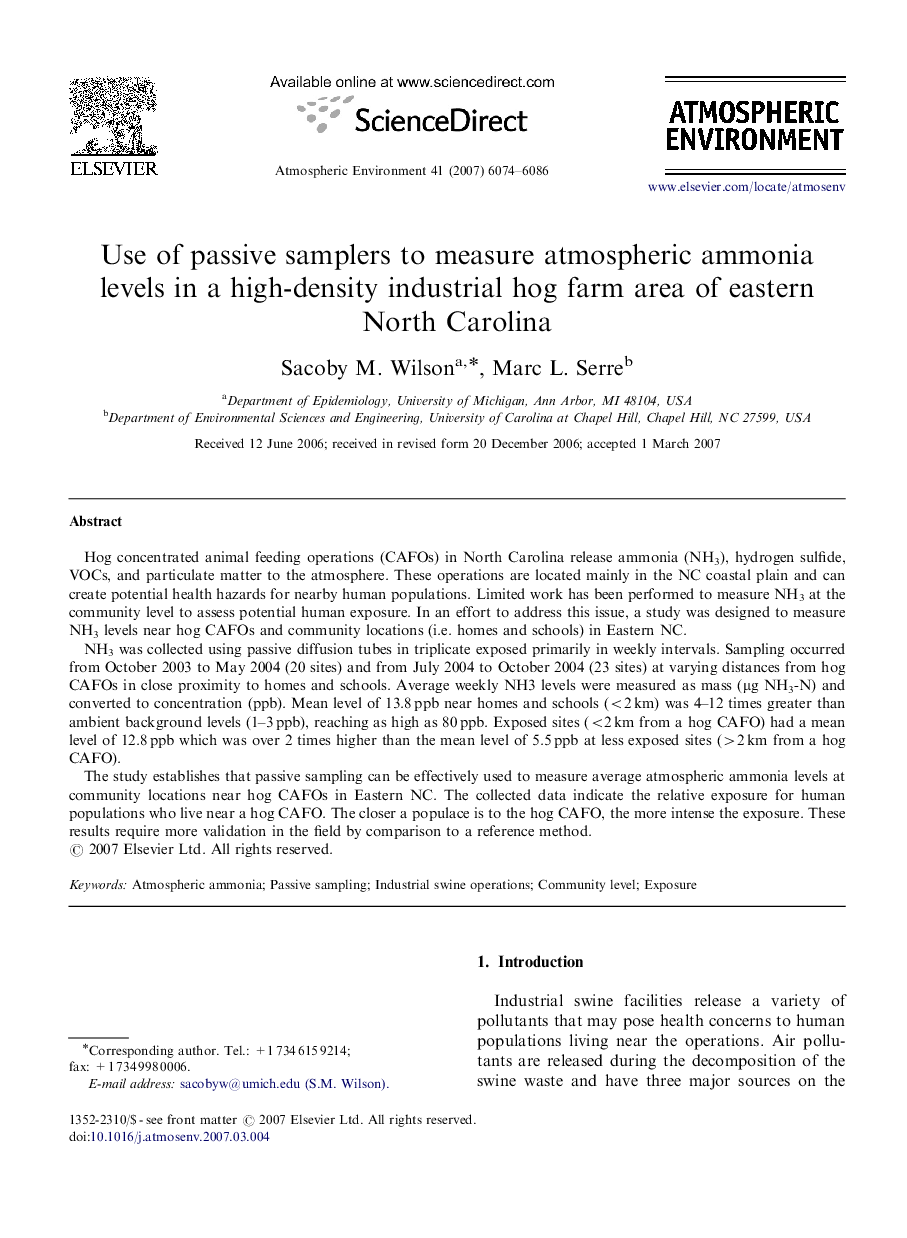| Article ID | Journal | Published Year | Pages | File Type |
|---|---|---|---|---|
| 4442585 | Atmospheric Environment | 2007 | 13 Pages |
Hog concentrated animal feeding operations (CAFOs) in North Carolina release ammonia (NH3), hydrogen sulfide, VOCs, and particulate matter to the atmosphere. These operations are located mainly in the NC coastal plain and can create potential health hazards for nearby human populations. Limited work has been performed to measure NH3 at the community level to assess potential human exposure. In an effort to address this issue, a study was designed to measure NH3 levels near hog CAFOs and community locations (i.e. homes and schools) in Eastern NC.NH3 was collected using passive diffusion tubes in triplicate exposed primarily in weekly intervals. Sampling occurred from October 2003 to May 2004 (20 sites) and from July 2004 to October 2004 (23 sites) at varying distances from hog CAFOs in close proximity to homes and schools. Average weekly NH3 levels were measured as mass (μg NH3-N) and converted to concentration (ppb). Mean level of 13.8 ppb near homes and schools (<2 km) was 4–12 times greater than ambient background levels (1–3 ppb), reaching as high as 80 ppb. Exposed sites (<2 km from a hog CAFO) had a mean level of 12.8 ppb which was over 2 times higher than the mean level of 5.5 ppb at less exposed sites (>2 km from a hog CAFO).The study establishes that passive sampling can be effectively used to measure average atmospheric ammonia levels at community locations near hog CAFOs in Eastern NC. The collected data indicate the relative exposure for human populations who live near a hog CAFO. The closer a populace is to the hog CAFO, the more intense the exposure. These results require more validation in the field by comparison to a reference method.
